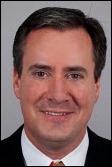The article about Pediatric Associates in CA has a nugget with a potentially outsized impact: the implication that VFC vaccines…
From the Consultant’s Corner 2/11/12
Success Strategies for Extending IT to Community Practices
Any time a hospital or integrated delivery network decides to extend electronic health record (EHR) and practice management technology to community physicians, there typically are two main goals: 1) improve patient care sharing clinical information across a common HER, and 2) strengthen relationships with the referral base.
It may sound easy, but extending information technology (IT) can be as difficult as winning the Super Bowl if you don’t avoid some major pitfalls along the way. So let me play “coach” for a minute. Here’s my playbook for how to successfully extend your organization’s IT capabilities to referring physicians in your community:
- Understand the fears of a community practice. When a physician group considers tying into your system, it’s usually afraid of losing a little bit of control over practice operations, and giving the sponsoring entity access to financial information. They sure as heck don’t want to run the risk of having competing providers gain access to their patient database and fee schedules. In addition, they’re almost always concerned that cash flow might take a hit during the transition period. So Job #1 is to erase—or at least ease—these fears from the get-go.
- Sell the benefits. There are obviously a host of benefits in having a shared EHR. The community practice gets instant access to things like hospital discharge summaries. Conversely, the hospital gains access to all primary care information. Of course, community practices enjoy major financial benefits; they don’t have to fork over the purchase price for an EHR.
- Determine how much customization is really needed. Private practices often don’t need as many bells and whistles as your employed specialists do. Instead of the familiar 80/20 rule, in many cases you can adhere to a 95/5 rule: 95% of what you provide can be a standardized solution; the other 5% may need tweaking. For example, if you’ve already customized a system for your well-respected in-house pediatric group, leverage it by offering it to your referral base, too.
- Use special teams when necessary. Every football coach knows the importance of special teams. So my advice is to create special teams for HIT: one for your employed physicians, the other for private practices in your area. Consider this thought: If a large percentage of your on-staff orthopedic surgeons aren’t currently getting custom IT solutions from you, they’ll be irate if you offer custom solutions to unaffiliated surgeons in your community first. The answer is to create one support team for your in-house providers and a separate consulting team to work with referring physicians. That way each group of physicians gets VIP treatment. You can even create a special billing team, bringing in a third-party expert to help the community practices avoid revenue cycle problems.
- Don’t take shortcuts in training. No athlete ever reaches the pinnacle without a lot of training. In similar fashion, community physicians will need more than a few hours of online training to master the new system you’re extending. Don’t leave your referring practices in training limbo. Get some super-users on board and be responsive to their concerns. Otherwise, your help desk will get flooded with angry calls.
- Quickly identify revenue cycle problems. As a private practice gets accustomed to a new IT system, there’s often a short-term impact on productivity and profitability. And guess what? They’ll blame you for any revenue cycle slowdowns. Since that defeats one of the main purposes for extending your system in the first place—strengthening relationships—it’s imperative that you also extend resources to help practices keep their revenue cycles humming.
Most of the referring practices in your community already are sold on the idea of integrating technologically with other providers and facilities in the community. They have a good grasp of the major benefits. You’re halfway home already. With these coaching tips, you’ll be well on your way to achieving success in extending IT to referring practices in your area.

Brad Boyd is vice president of sales and marketing for Culbert Healthcare Solutions, a professional services firm serving healthcare organizations in the areas of operations management, revenue cycle, clinical transformation, and information technology.
